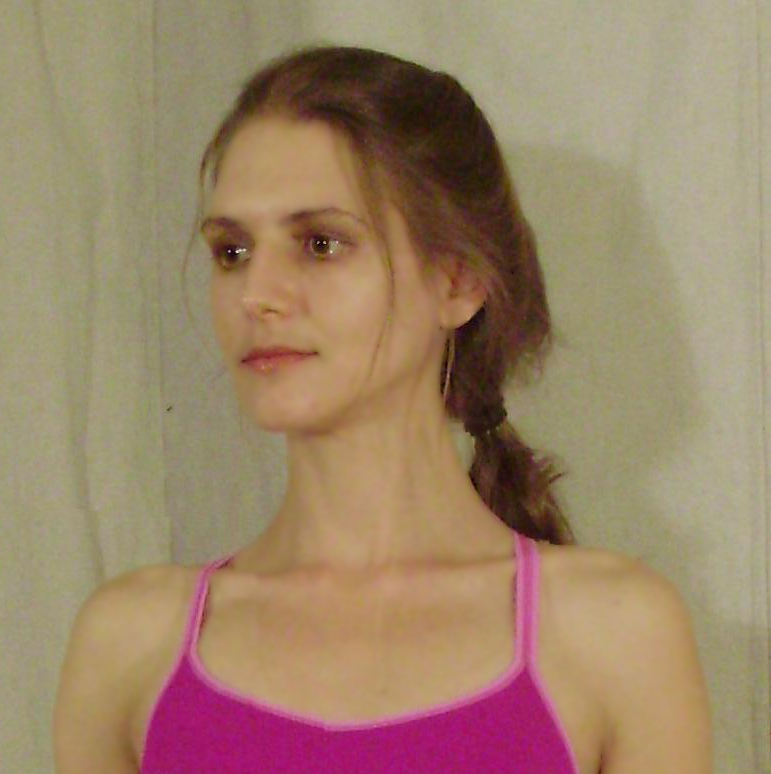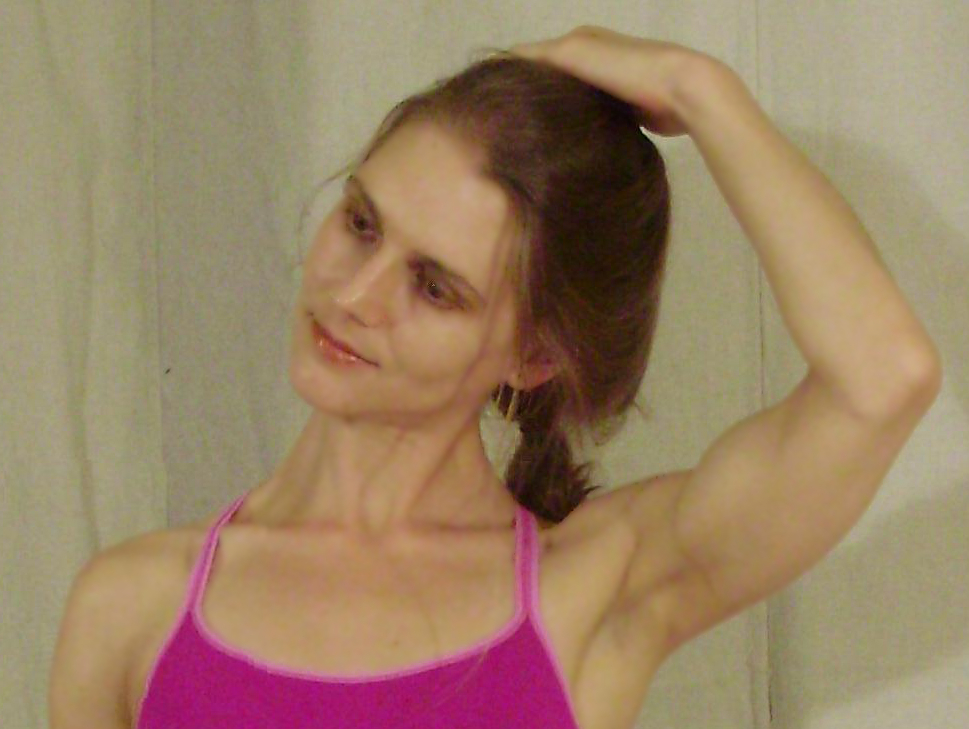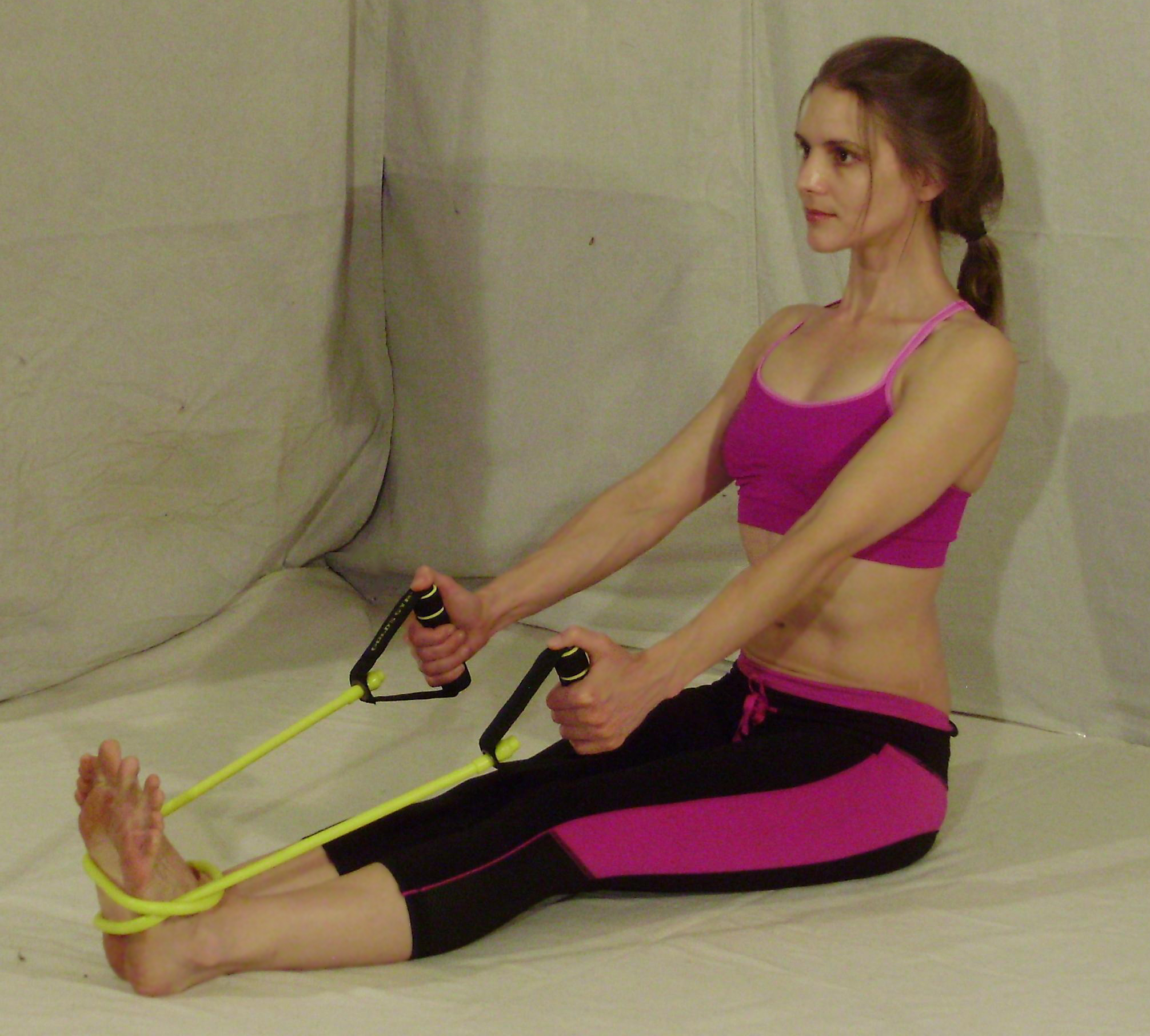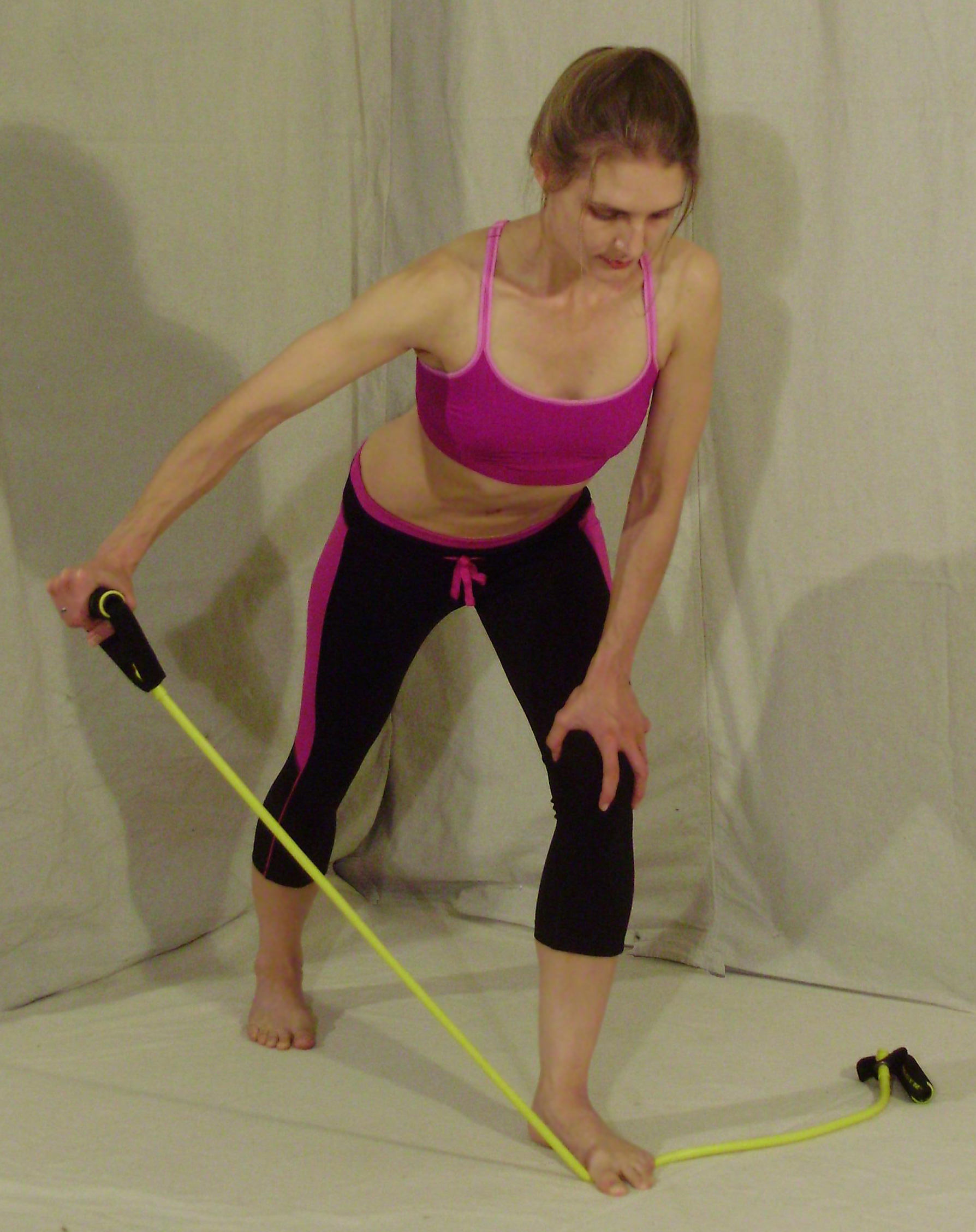
Posture Care
The following workout is designed to address problems caused by muscular imbalances. I would not assign these exercises to someone who suffers from a more complicated or serious problem, such as a herniated disc, and I would insist that that client consult a specialist. If you choose to attempt these exercises, please be careful and use common sense.
Daily Slump Corrector Workout
The following workout is typical of what I might program for a client in general good health who suffers from upper-back weakness and/or a habitual slump. This is known as “upper crossed syndrome”, and it can contribute to rotator cuff impingement and headaches. It also tends to make a person look shorter and less confident.
1. Upper Trapezius Stretch
The upper trapezius runs from the base of the skull to outer parts of the clavicle and scapula. The muscle is designed primarily to tilt the head up and to lift the shoulder blades. When the upper trap is overactive, chronically shortened, or too strong, the head can be pushed forward and the shoulderblades can creep up and forward. I rarely assign exercises such as shoulder shrugs because I find that most clients need to quiet and stretch this area.
- Stand or sit straight, drawing your navel in. Roll your shoulders up, back and down, pulling your scapulae (shoulder blades) down and in towards your spine. Make sure you keep your right scapula grounded during this exercise.
- Tuck your chin and reach the crown of your head up and straight out over your left shoulder.
- Lengthen your neck as you inhale, and let the stretch deepen as you exhale. Let the weight of your head stretch your trapezius, or use your left hand to add gentle pressure. Inhale for 3 seconds, exhale for 3 seconds. Hold the stretch for five breaths.
- Repeat other side.

- Alternatively, turn your head 45 degrees to the right. Tuck your chin and reach the crown of your head up and out over a line 45 degrees from the midline.
- Lengthen your neck as you inhale, and let the stretch deepen as you exhale.
- You might feel this stretch in the more medial part of your upper trap


2. Pectoral Stretch
The pectoralis major (“pec”) is designed to pull the upper arm towards the front of the body. Its fan-shape design allows it to do this at a range of angles. It is a powerful pushing muscle which assists the (smaller) triceps in exercises such as push-ups and bench presses. People who hold their arms in front of their bodies for long periods often develop tightness and/or shortening in their pectoralis major. This can contribute to their shoulders creeping forward and rotating inward. It is important to balance strengthening exercises with proper stretching.
- Raise your left arm to the side so that your elbow is level with your shoulder. Bend your left elbow 90 degrees and point your left hand toward the ceiling.
- Brace your entire lower arm on a vertical surface such as a wall or door frame (not shown), and lean forward gently until you feel a stretch in your chest and the front of your shoulder.
- Hold for at least 30 seconds on each side.
- This stretch can also be done with the elbow lower than the shoulder.


3. Seated Row
The rhomboids and middle trapezius are designed to pull the shoulderblades in towards each other and down along the spine. They are very important for supporting the upper back, but they are often weak and overstretched because they are underused, and also because their antagonists (muscles with opposite functions) are too strong and/or overactive.
Notice that we have just stretched and relaxed the upper trap and pecs. This will allow us to work our back muscles more effectively.
- Sit upright with your legs extended in front of you, looping elastic tubing around your feet as shown, holding the handles with your palms facing in.
- Inhale and extend your spine through the crown of your head, draw in your navel and tuck your chin. Exhale slowly over two seconds and smoothly, drawing your fists straight back to your ribs while drawing your shoulder blades together, leading with your elbows.
- Inhale over two seconds and extend your fists back out to their initial position.
- Do 15 repetitions.


4. Rear Deltoid Raise
The most obvious shoulder muscle is called the deltoid, which is shaped like a triangle (or the Greek letter “delta”) and connects about halfway down the upper arm. The anterior head, which starts at the clavicle, flexes the arm (lifts it forward) and rotates it internally. The middle head starts at the acromion process of the scapula and abducts the arm (raises through the side, as if you are a jumping jack or making a snow angel). The posterior head starts at the spine of the scapula. It extends the arm (lowers it from straight forward) and also rotates it outward.
It is common for the anterior (front) head of the deltoid to become much stronger than the posterior (rear) head, resulting in shoulders rotating in, which often contributes to a slump. The rear deltoid can be strengthened to better match the front deltoid with the following exercise:
- Stand with feet parallel and collar-bone width apart, left foot pinning elastic tubing to the floor about halfway down the length from the handle in your right hand.
- Squat as if sitting in a chair, and step your right foot straight back to stabilize, placing your left hand on your left knee for support. Keep your shoulders level, right elbow slightly bent, and maintain a straight line between your head and your hips.
- Exhale and open your arm to shoulder level. Inhale and return your fist to the starting position.
- Do eight repetitions on each side.


5. Corpse Pose
Lie flat on your back on a firm surface, arms near your sides, palms up, legs extended down. You may place a folded towel behind your neck if desired. Lie here for at least one minute, relaxing as much of your body as you can. It is important to allow your body to settle into better alignment after working on imbalances.